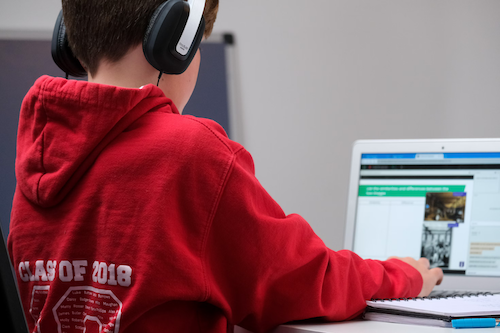Integrating Game-Based Learning in Modern Software Development

Gamification refers to the art of applying the specific features and concepts of a given game into non-game situations and scenarios. In other words, using the components of a game to solve a problem. Why is this so great? Because games have a long history of engaging people of all ages but can also be used to inform and teach. Parents who may be skeptical about the impact of gaming on kids can learn more at Codemonkey while we show how gamification can be integrated in modern software development.
Gamification Defined
You read the simple definition of gamification above, but let’s give it a little bit more of our attention. Gamification involves introducing marketing materials and descriptive data into a specific environment, using components of various games. The goal is to begin to connect their behaviors to your brand so they feel like a part of the organization. At the same time, it allows you to foster relationships with your customers, which is the best way to build brand loyalty and drive sales revenue. And that’s the ultimate goal of creating a business - sharing a service or product for the greater good, while also enjoying a career that you love and can make a living doing.
Making Gamification Work
The end goal, for purposes of this article, is to achieve your business goals. Bringing gamification into the process means finding direction and information that will get you to those goals. How? By using elements of gaming to develop strategies that motivate, build healthy competition, create opportunities for new experiences and to put those new skills to work in other situations.
By creating an engaging and interesting moment for your target audience, you are able to communicate with them in a unique and memorable way. And being memorable brings customers back. Here are some gamification methods to try for your software development goals:
- Achievements - customers love earning something, so use gamification concepts to offer badges, awards or diplomas when your customers reach a specific goal. This healthy competition with the self makes it fun to reach goals and rewards loyal customers.
- Leaderboard - to encourage competitiveness and participation, use a ranking system to motivate customers to stay engaged. Competition with others makes it fun to stay engaged and keeps people coming back for more.
- Countdown - when customers can see themselves advancing, it’s motivating to keep them going, which translates to more interaction with your target audience. Seeing progress in real time is fun, but also boosts the capacity to continue taking action to reach a goal.
Gamification has the potential to answer questions, create new knowledge and take presented evidence and use it to make decisions. Engaging people with games aids the development of many aspects of software:
- Measurement scoreboards
- Scorecards
- Visualization opportunities
- Chaos control
- Product resilience
- Collaboration
- Budgets and policies
- New experiences
Learning is optimized when it’s fun, so it makes sense that incorporating elements of gaming into business practices builds knowledge development, but also keeps people engaged and willing to learn something new or enhance what they already know.
Not only can it be used in the business world, but it’s also the ideal choice for use in schools. Gamification has a lot of potential to be incredibly beneficial to the learning process in today’s digital world, across the board and coding for kids can be taught at all ages.
See Coding Explained For Kids on YouTube.
The bottom line is that in today’s tech-focused world, it makes complete sense to incorporate gamification into industries that may not otherwise be using those concepts or are using them in a way that isn’t engaging or fun. Developing engaging software is vital for business and educational purposes so getting in on it now is something you won’t regret.

